The Children’s Defense Fund-Ohio is committed to sharing up to date state and local developments regarding the community response in supporting children and families. We will post resources, links, and cross-posting critical information to this page.
Children Should not go Hungry in the Summer Months – Federal Action Can Help
May 11, 2021
By Katherine Ungar, Policy Associate
Chloe and her little brother love going to school and most of all they love their school meals. They’re good and fill their bellies. As the siblings get closer and closer to the weekends, they dread the two days where food is scarce in their homes and they oftentimes go to bed with a rumbling tummy on Friday night and often wake up with hunger pains until Monday morning arrives. As the school year comes to a close, they begin to worry about how they’re going to be able to get food to eat and how often they might go without. For many children across Ohio like Chloe and her little brother, the summer months aren’t all sunshine and carefree. According to the U.S. Census Bureau’s Household Pulse Survey, about 13% of Ohio families with children worry about food insecurity and are unsure or don’t feel confident about where they will get their next meal. The summer months aren’t all sunshine for far too many Ohio children who go hungry without school lunches when the school year ends. Read more here.
The American Rescue Plan Includes Support for Families and Children Struggling to Make Ends Meet
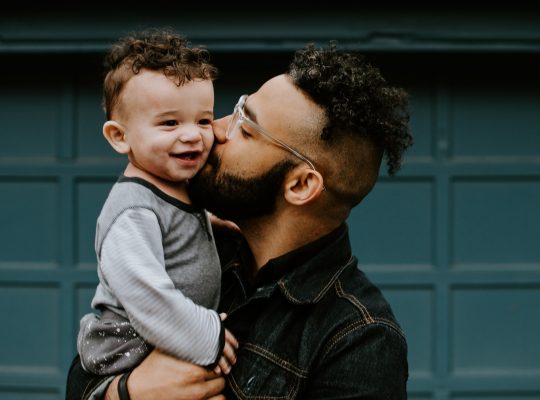
To help people get through the COVID-19 pandemic, the American Rescue Plan massively expanded the Child Tax Credit (CTC). It will give most families $3,000 to $3,600 per child, even if the families have little or no income.
In 2021, families can get:
• $3,600 ($300 a month) per child for children ages 0 to 5.
• $3,000 ($250 a month) per child for children ages 6 to 17.
IRS should start paying these benefits monthly in July 2021. Most families will get $250 to $300 a month per child from July through December 2021. Families will get the remaining $1,500 to $1,800 per child when they file their 2021 taxes in Spring 2022.
The Child Tax Credit will not affect your Medicaid, SNAP/Food Stamps, TANF Cash Assistance, SSI or other public benefits.

The Far-Reaching Consequences of the Digital Divide on Ohio’s School Children
November 5, 2020
By Alison Paxson, Policy & Communications Associate
Many underserved Ohio communities are on the wrong side of the digital divide – and this has huge ramifications for children who, already struggling with homework and opportunity gaps, can no longer access the consistent supports of their school buildings
In November 2019, months before the COVID-19 pandemic turned the world upside down, an Ohio University student’s photojournalism project, “The People Left Behind in a Broadband World”, was picked up by The Wall Street Journal. Read more here.
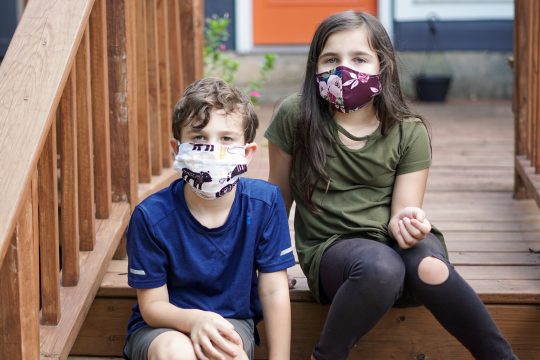 Without another Relief Bill from Congress, a Growing Number of Families Cannot Afford to Put Food on the Table
Without another Relief Bill from Congress, a Growing Number of Families Cannot Afford to Put Food on the Table
October 28, 2020
By Katherine Ungar, JD, Policy Associate
The pandemic casts a looming shadow on the state of childhood hunger in our country and right here in Ohio. Feeding America, a national hunger relief organization, predicts that 1 in 4 children could be food insecure by the end of 2020, up from 1 in 7 children in 2019. In a recent household pulse survey by the US Census Bureau, 11.1 percent of adults in Ohio reported that their households “sometimes or often did not have enough food to eat” in the past seven days.
Record-setting unemployment, loss in health care coverage, unexpected expenses, and lack of access to school meals, are among the myriad of reasons why the pandemic has caused a rise in the number of hungry children and families. Read more here.
Food Deserts in Appalachia: The Impacts of COVID-19 on Families and Children
October 6, 2020
By Elinor Broy, College Intern
Not only are rates of unemployment, homelessness, poverty, and food insecurity continuing to rise in Ohio and across the country due to COVID-19, but also, more families and children are living in food deserts with limited access to healthy and affordable nutrients. With local businesses and stores closing and corporate grocery chains full of empty shelves, many lower income, rural communities do not have sufficient access to basic needs, including food.
The detrimental effects of COVID-19 have resulted in more families qualifying for SNAP benefits and longer food pantry lines, but with less fresh and healthy food resources to accommodate these increasing needs. According to the Brookings Institution, currently there are 14 million children in the United States in need of immediate food assistance. Read more here.
Inequitable Broadband Infrastructure Limits Our Children’s Opportunities to be Healthy, Access Education, and Flourish into Adulthood
September 25, 2020
 By Alison Paxson, Communications & Policy Associate
By Alison Paxson, Communications & Policy Associate
According to census data released last week, Cleveland, Ohio is now the poorest big city in America. Interestingly, Cleveland’s pre-COVID poverty rate of 30.8% mirrors another critical figure the city is ranking poorly in – its connectivity.
In 2019, 30.7% of Cleveland households had no access to broadband internet of any type, including cellular data, and 45.96% had no wired connection, making it the worst-connected city with more than 100,000 households in the United States. In fact, in the list compiled by the National Digital Inclusion Alliance (NDIA), there were five Ohio cities with populations of 65,000 or more where more than 20% of households had no broadband access: Cleveland, Lorain, Canton, Youngstown, and Dayton.
Inequitable access to the internet has persisted for decades without being adequately addressed by state and federal leaders, and it has created sizable digital divides and even digital deserts where the lack of affordability and/or availability of internet is having far-reaching implications for children and families throughout Ohio and across the country.
Access to affordable broadband internet is now so intertwined with our health and life outcomes that experts are beginning to call it a “super-determinant of health”. Read more here.
 New legislation is a first step in meeting the growing demand for more safe and supportive homes for children in foster care.
New legislation is a first step in meeting the growing demand for more safe and supportive homes for children in foster care.
September 4, 2020
By Kim Eckhart, KIDS COUNT Project Manager
All children deserve a safe and supportive home. That’s why the Children’s Defense Fund-Ohio is encouraged by new legislation aimed to address the shortage of foster homes available to children throughout Ohio. On September 2nd, Ohio passed House Bill (HB) 8 to provide more flexibility in training requirements, including allowing some training to be conducted online, to become a licensed foster caregiver. Read more here.
 Organizations from throughout Ohio urge Congress to extend the census timeline in support of a complete and accurate count
Organizations from throughout Ohio urge Congress to extend the census timeline in support of a complete and accurate count
September 1, 2020
By Katherine Ungar, JD, Policy Associate
The Ohio Census Advocacy Coalition, co-led by CDF-Ohio, and joined by 17 non-profit and advocacy partners from throughout Ohio, submitted a letter to Senator Rob Portman and Senator Sherrod Brown urging them to support legislation that would extend the census timeline by four months. This additional time is critical to ensuring Ohio’s Census Count is complete and accurate.
The process for an accurate and complete 2020 Census has been significantly impacted by the COVID-19 pandemic. The U.S. Census Bureau (USCB) suspended field activities and postponed key operations putting it significantly behind schedule. These very serious challenges prompted career professionals at the USCB and the U.S. Secretary of Commerce to request that Congress extend the reporting deadlines. This extension is critical for USCB to deliver reliable, accurate, and complete apportionment and redistricting data to the Congress and states.
In 2017, Ohio receives an estimated $56 billion in federal funds tied to census data. The financial impact of a significant undercount could be catastrophic to things such as transportation funding, community development block grant funding, and critical human service programs that protect children – such as SCHIP, Medicaid, and Head Start. Additionally, a significant undercount in the 2020 Census combined with Ohio’s slow population growth relative to other states, will further reduce Ohio’s influence in Congress. Without a complete count, we cannot ensure that Ohioans are afforded their constitutionally guaranteed promise of adequate political representation through the subsequent redistricting cycle following the census. Read full statement here.
The Importance of Accurately Counting All Ohio Children in the 2020 Census

August 28, 2020
By Kendall Glandorff, Intern
The 2020 census is an opportunity for the state of Ohio and our nation to assure every individual they are more than just a number – especially our children.
In light of the recent announcement to cut census operations short this year, we are all called to act in the best interests of our children by making sure they count and making sure we count them now – before we leave billions of dollars on the table that could otherwise fund and resource their childhoods for the next decade. By completing the 2020 census, we are advocating for and empowering ourselves, our communities, and our children.
The data collected from this census will allocate adequate resources to our state in order for us to care for all people living in Ohio. It is important to remember that while adults and elderly persons are a majority of our state population, the great state of Ohio also has an ever growing population of children. There are an estimated 2,593,3325 million children living in Ohio and pre-pandemic, 19.8 percent of them were living in poverty and in communities that lack resources to provide sufficient education and nutritional access. Missing children in the census leads to inadequate funding and appropriations to the communities where they live. For example, a recent analyses showed that every missed individual in the 2020 Census means that states leave anywhere between $1200-1700 on the table, every year, and for ten years. Read more here.
 Children’s Caucus Panel: Promoting and Protecting Child Welfare During COVID-19 and Beyond
Children’s Caucus Panel: Promoting and Protecting Child Welfare During COVID-19 and Beyond
June 9, 2020
By Alison Paxson, Policy Fellow
On June 5th, the Ohio Legislative Children’s Caucus met with state leaders, policymakers, and advocates to discuss key funds and policies needed to bolster Ohio’s child welfare system and ensure the safety of our children during this time of heightened household stress and uncertainty.
Ohio’s child welfare system has been in crisis long before the COVID-19 pandemic. Our state saw a surge in the number of children in care with complex needs during the opioid crisis. Inadequate funding for the child welfare sector during this epidemic contributed to unsustainable costs, a strained workforce, and ultimately, poor outcomes for children throughout Ohio.
According to a report by the Annie E. Casey Foundation, Ohio has some of the worst outcomes educationally and economically for children who are placed in foster care. Nationally, 49% of former foster youth are employed two years after leaving care, while in Ohio that rate is only 36% of Ohio’s youth. Likewise, 76% of foster youth nationally earn a high school diploma, compared with only 43% of Ohio’s youth. Read more here.
Join us for Virtual Town Halls on the disparate impact of COVID-19 on minority populations

We scheduled these virtual town hall meetings to create a forum to share our expertise and insight and will be sharing all written testimony and presentations with the subcommittee members of the Minority Health Strike Force. Each virtual Town Hall will be held as a Zoom webinar and be recorded. Only registered participants will be able to join the webinar. Register here.

Child Care is a Central Issue for Children and Families as we Re-Open the Economy and Re-emerge from this Pandemic
May 29, 2020
By Alison Paxson, Policy Fellow
Co-chaired by Sen. Peggy Lehner and Rep. Allison Russo, the Ohio Legislative Children’s Caucus is a bipartisan, bicameral, issues-based caucus created to improve the effectiveness and reach of policy designed to positively impact children from birth to age eighteen (and beyond in some cases). The goal of the caucus is to make a significant and lasting difference in the lives of children through public policy to move the needle on these child indicators of well-being.
On May 22nd, the Ohio Legislative Children’s Caucus launched a new webinar series to convene state leaders, policymakers, and advocates on a bi-weekly basis to discuss how our state can advance investments and child-focused policies to support a strong and resilient Ohio during this public health crisis and beyond. Read more here.
Support the HEROES Act, Support our Children
May 20, 2020
By Katherine Ungar, JD, Policy Associate
More families and children across the country, and right here in Ohio, are experiencing hunger. We must do everything we can to ensure our children do not go hungry and receive the nutrition support they need during the immediate public health emergency and beyond. The recently House-passed HEROES Act, the House’s version of a fourth COVID-19 response package, includes provisions that will have an immediate and significant impact on food access and security. These measures are especially important as we enter the summer months, the time when, even prior to the Pandemic, households with children experience higher rates of food insecurity due to lack of resources and school lunches. Read more here.
Vaccinations are Critical to Child Well-Being
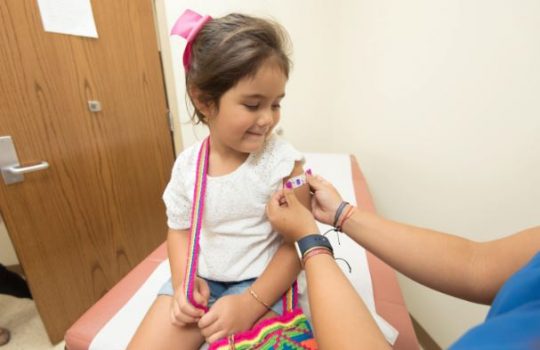 May 10, 2020
May 10, 2020
Kelly Vyzral, Senior Health Policy Associate
As we enter the month of May and our second month of social distancing in an effort to flatten the curve of the COVID-19 pandemic, a new danger threatens to raise its head.
Although children haven’t typically been directly affected by COVID-19, many aspects of their lives have been disrupted, including medical care. There is a growing concern that parents are postponing the regularly scheduled immunizations for their children out of fear of exposing them to the coronavirus or because of limited appointment availability with their pediatricians.
If children aren’t receiving immunizations, especially during the first 18 months of life, a significant vaccine gap could occur. This vaccine gap jeopardizes not only the unvaccinated child, but immuno-compromised children and adults who can’t get vaccinated for health reasons. Read more here.
 Ohioans are Increasingly Experiencing Food Insecurity, an Unacceptable Reality in 2020
Ohioans are Increasingly Experiencing Food Insecurity, an Unacceptable Reality in 2020
The state of food insecurity in our country
May 8, 2020
By Katherine Ungar, JD, Policy Associate
As a result of the public health emergency, food insecurity across the United States has drastically increased. By the end of April, more than one in five households say their children are not getting enough to eat, a rate three times higher than during the 2008 Great Recession. The U.S. Department of Agriculture (USDA) defines food insecurity as a lack of consistent access to enough food for an active, healthy life. Food insecurity is one metric used to measure and assess the risk of hunger. Read more here.
 Ohio Needs Emergency Funding for Child Welfare in the Next COVID-19 Relief Package
Ohio Needs Emergency Funding for Child Welfare in the Next COVID-19 Relief Package
May 7, 2020
As Ohio organizations working to ensure the well-being of our children and families, we urge you to ensure Congress sends funds to strengthen the state and local systems that prevent and respond to child abuse and neglect and that address the needs of children, youth, and families already in the foster care system.
The impacts of COVID-19 are putting stress on families who are attempting to navigate new public health safety protocols, school closures, uncertain childcare arrangements, job losses, social isolation, and significant barriers to many critical support services. These kinds of stress increase the risk of child abuse and neglect at the same time family supports and child welfare response are challenged by the public health crisis. Facing these challenges requires a comprehensive approach that addresses the entire child welfare continuum. Read Letter to Ohio’s Congressional Delegation here (U.S. Senate) and here (U.S. House of Representatives).
Medicaid’s Role in Protecting Vulnerable Children & Families
May 1, 2020 
Ohio’s Medicaid/CHIP program is a health insurance program for low income families and children. It is a state-federal partnership that helps healthy children stay healthy and sick children get the care they need. Medicaid provides a robust set of services to children through Ohio’s HealthChek program. These services help youth thrive and support healthy development.
In Ohio over 1.1 million children and nearly 1.6 million adults were receiving Medicaid in January 2020. However, during 2019, over 23,000 children lost Medicaid, and over 70 Ohio counties saw enrollment declines in Medicaid for children. This is concerning as these declines did not correspond with a gain in private insurance coverage. The growing child uninsured numbers are especially problematic as Ohio battles the COVID19 public health crisis. Action must be taken to ensure that families and children are able to access the healthcare they need. Read more here.
Ohio versus Michigan and Shifting Approaches to a Complete 2020 Census Count
May 1, 2020
Tracy Nájera, Executive Director
Recently, Governor DeWine challenged Ohioans to complete their census forms and beat the state up north. As of April 29th, Ohio’s response rates is 58.9%  while Michigan’s rate is leading by 2.2%. Just think of Woody Hayes’ “greatest comeback” in the 1975 OSU-Michigan Big Ten Title game – we may have started out behind, but we can turn this around in the second half.
while Michigan’s rate is leading by 2.2%. Just think of Woody Hayes’ “greatest comeback” in the 1975 OSU-Michigan Big Ten Title game – we may have started out behind, but we can turn this around in the second half.
In Ohio, there are currently 13 counties that are trailing the rest of the state, with 12 counties in southeastern Ohio with response rates under 50% and one county in northern Ohio, Ottawa County, significantly trailing with 40.2% of residents responding thus far. In Ohio’s counties with urban centers, the response rates are much more nuanced. Overall, many of those counties appear to be doing well; however, digging into more detailed information tells a different story. Read more here.
How Do We ‘Do School’ During Pandemic?
 April 30, 2020
April 30, 2020
Tziporah Tiller, College Intern
Ohio has extended the stay-at-home order until the end of the month and schools will remain closed for the rest of the year. In a normal school year, schools already have to combat summer learning loss. However when school starts in September, parents and educators are also worried about “corona learning loss” as well. A national study on “Understanding coronavirus in America” from the University of Southern California found that nearly 25% of parents fear their children will not be prepared for the next school year because of school closures. Read more here.
 Governor DeWine Establishes Minority Health Strike Force to Tackle Health Inequities in Testing and Treatment
Governor DeWine Establishes Minority Health Strike Force to Tackle Health Inequities in Testing and Treatment
April 20, 2020
At the beginning of this week, Governor Mike DeWine established the Minority Health Strike Force to address growing concerns around the state and the nation that disproportionate numbers of individuals who are dying from COVID-19 are African-American, Latinx, and from lower income communities. The disproportionate deaths are the result of a history of economic, health, housing, and nutrition red-lining that exist in many of our communities. The lack of resources and opportunities in predominantly African-American, Latinx, and lower-income communities also produced worse health outcomes and complications from chronic diseases like asthma and type 2 diabetes. There have been numerous reports calling for differentiated approaches to provide additional services and interventions for communities that have fewer resources to meet the growing COVID-19 challenge.
On April 20th, Governor DeWine established the Minority Health Strike Force which will address these issues in Ohio. The Strike Force is made up of health professionals, faith leaders, policymakers, business leaders, social service sector, social justice organizations, and the philanthropic sector.
Ohio Cannot Wait Any Longer to Submit a Plan to the USDA for Pandemic-EBT
April 16, 2020
Statewide health, education, and child advocacy organizations call for DeWine Administration to act swiftly to submit a plan to the USDA to provide additional money for food for families with children who qualify for free or reduced lunch.
State and local advocacy organizations focusing on children, health, education, nutrition and low income communities issued a joint letter to the DeWine Administration calling for the administration to swiftly submit a plan to the USDA for Pandemic- EBT (P-EBT), which would provide much needed relief to Ohio’s children and families. Read full statement here. Read our blog on P-EBT here.
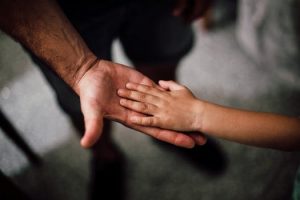 We are all in this together as long as we do not leave our most vulnerable behind
We are all in this together as long as we do not leave our most vulnerable behind
April 15, 2020
We are all in this together – so long as all Ohioans are provided with the opportunities that they need to achieve optimal health and well-being are shared among all Ohioans and essential health care services are provided to those most in need and provision is not based on our individual race, ethnicity or income. We leave our most vulnerable behind when we do not seek out policies and solutions that address historical injustices and provide resources according to need. Ensuring we are all in this together starts with good data to fully understand disparities in our health care system, how such gaps may be widening during this pandemic, and how we can move forward to address equitable access to testing, treatment, and resources. Read the full statement here.
3 Weeks at Home: Stress, Anxiety, and Coping Resources for Children and Families
April 7, 2020
In Ohio, many children and their parents and caregivers are in their third week of social distancing. The significant loss of social activities like sleepovers with friends, sport activities, and the routine of going to school every day is weighing on many and producing stress for everyone. In addition, many parents and caregivers of children are experiencing economic hardships due to layoffs, furloughs, and lack of childcare. We must also recognize that our children also feel anxiety about contracting the disease and concern about their loved ones contracting COVID-19. Psychiatrists, psychologists, and counselors explain that many of us may be currently experiencing grief as we try to come to terms with the loss of stolen moments and extensive changes to daily societal life. Read more here.
Meeting Children’s Nutritional Needs in Uncertain Times
 By Katherine Ungar, JD, Policy Associate and with contributions from Tziporah Tiller, College Intern
By Katherine Ungar, JD, Policy Associate and with contributions from Tziporah Tiller, College Intern
April 2, 2020
School breakfast and lunch programs provide our children much-needed nutritious meals so they can learn and be healthy. Children who come from food-insecure homes obtain a significant portion of their daily calories and nutrients from the meals they receive at schools. Programs like the National School Lunch Program (NSLP) ensure children receive meals at school. The NSLP has been shown to reduce childhood food insecurity, poor health, and obesity. National and state programs like NSLP are critical for the well-being of our children, particularly food insecure and low-income children. Read more here.
H.B. 197: Ohio’s Initial Response to the COVID-19 Challenge

March 30, 2020
On Friday, March 27th Governor DeWine signed HB 197, passed by the Ohio General Assembly to protect Ohioans during an extraordinary health and economic crisis resulting from the spread of the Corona virus (COVID-19). The legislation’s directives[1] on education and child care centers are particularly pertinent to children and families. HB 197 also contains consumer protections for families who have lost jobs or work hours in the aftermath of extraordinary orders that have closed all but essential activity and required Ohioans to stay at home at least until April 6th. Finally, there are some provisions addressing civic functions including voting, local government meetings and tax deadlines. Read more here.
 The U.S. Census Bureau Adjusts Field Operations Amid COVID-19 Concerns
The U.S. Census Bureau Adjusts Field Operations Amid COVID-19 Concerns
MARCH 28, 2020 — Based on continuing assessments of guidance from federal, state and local health authorities, the U.S. Census Bureau is suspending 2020 Census field operations for two additional weeks to April 15, 2020. The Census Bureau is taking this step to help protect the health and safety of the American public, Census Bureau employees, and everyone who will go through the hiring process for temporary census taker positions. Read more.
What the $2 Trillion Stimulus Package Means for Ohio’s Children and Families
By Kelly Vyzral
March 27, 2020
On Wednesday night the Senate passed a $2 trillion stimulus package designed to help stabilize the U.S. economy and provide some relief for the millions of Americans who are feeling the immediate economic impacts of the COVID-19 pandemic. To date, the House is expected to vote on this bill sometime this weekend. The financial help significantly needed right now when so many households who have one or two income earners have been sent home, laid-off, or furloughed. Read more here.
Read our summary of the Senate’s passed version here. We will soon update this page a summary and our analyses of the final enacted version signed by the President.
Ohio Must Act Now to Protect Ohio’s Children and Families
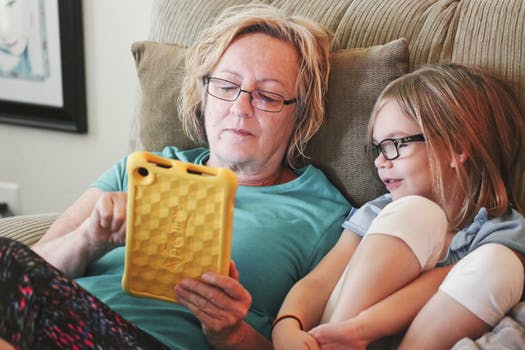 March 26, 2020
March 26, 2020
A society is measured by its treatment of its most vulnerable, which includes the children who cannot vote, lobby, or have a voice in the halls of power. Today, we are in the midst of one of our nation’s most daunting challenges as a result of the COVID-19 pandemic. This is the time for Ohioans to come together and figure out solutions to meet our challenges and a time for unwavering resolve and leadership in supporting our most vulnerable children and families. Read more here.
Key Policies to Support Children and Families during the COVID-19 Pandemic

March 19, 2020
The COVID-19 pandemic represents a new challenge – one that we’ve never experienced in our lifetime – but one that is not totally unexpected and one that we may be faced with more often in the future. Our goal as a community is to emerge from this public health crisis stronger, more resilient, and with lessons learned that we can move forward with in the future so that mistakes, missteps, and lack of preparedness in our societal infrastructures are not repeated. Read more here.
Resources to Support Children During this Time:
Helping Children Cope with Stress in the Era of COVID-19
Updates on the Federal Response:
Senate Approves $2 Trillion Stimulus After Bipartisan Deal
March 26, 2020
State of Ohio COVID-19 Portal
Below is more information about COVID-19 from the Ohio Department of Health:
Frequently Asked Questions from the Ohio Department of Health
Executive Orders Related the COVID-19:
Executive Order 2020-01D Declaration of State of Emergency
Governor DeWine Creates COVID-19 Minority Health Strike Force to Address Racial Disparities
April 20, 2020
Immediate actions must be taken to support children and families during the COVID-19 pandemic
March 17, 2020
The COVID-19 pandemic represents a new challenge – one that we’ve never experienced in our lifetime – but one that is not totally unexpected and one that may see more of in the future. Our goal as a community is to emerge from this public health crisis stronger, more resilient, and with lessons learned that we can move forward with in the future so that mistakes, missteps, and lack of preparedness in our societal infrastructures are not repeated.
However, this pandemic has unveiled the fragility of our human services sector and the magnitude of diminished services, access, and safety net supports. With natural disasters experienced around the world, and in this country, the first impacted and those who are most harmed are typically those who are most vulnerable in our society, the poor, the homeless, the sick, the very young and the very old. The significant challenges that we, as a nation, face is that our services and programs are not prepared to meet the needs of our communities at this unique moment in time.
So what should be done? Of course, first and foremost, we must all do our part to flatten the curve by following the advise of public health experts. In terms of policies and how best to invest our resources and flexibility apply our policies – our human services systems at the local, state, and federal levels, must take action to meet the needs of Ohioans right now.


 Children’s Caucus Panel: Promoting and Protecting Child Welfare During COVID-19 and Beyond
Children’s Caucus Panel: Promoting and Protecting Child Welfare During COVID-19 and Beyond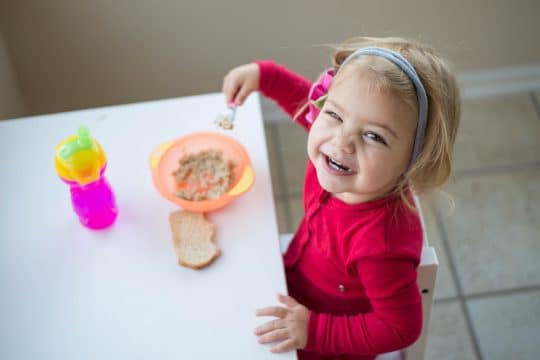
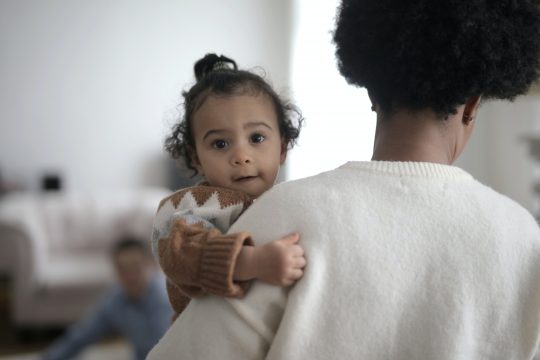 Ohioans are Increasingly Experiencing Food Insecurity, an Unacceptable Reality in 2020
Ohioans are Increasingly Experiencing Food Insecurity, an Unacceptable Reality in 2020

 The U.S. Census Bureau Adjusts Field Operations Amid COVID-19 Concerns
The U.S. Census Bureau Adjusts Field Operations Amid COVID-19 Concerns